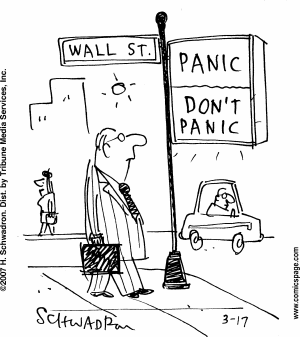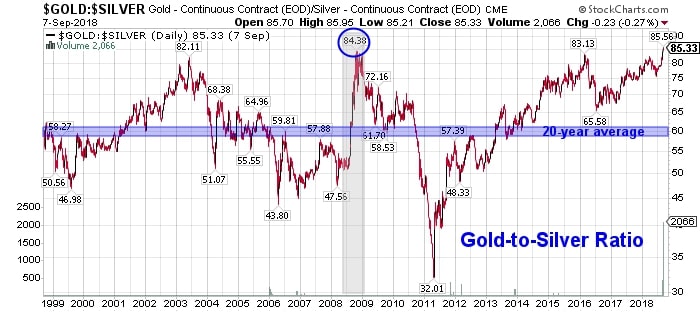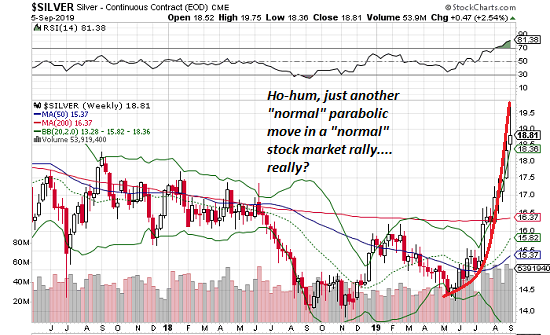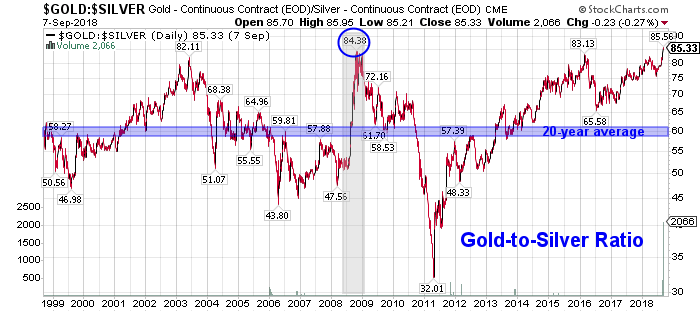The
escalating trade war between the U.S. and China has reached a fever pitch, with
financial markets seeming to lurch on every new development no matter how
insignificant. That’s understandable, but what investors need to know is that
in a world of surplus goods and services, the buyer has the upper hand.
Sure,
both sides are under considerable pressure to reach a deal. President Donald
Trump faces re-election next year, and the longer the trade disruptions drag
on, the bigger the potential for a steep stock market selloff and the deeper
the recession I think the U.S. economy has already entered. Xi Jinping, China’s
de facto president-for-life, is strapped with a slowing economy, with the 6.2%
rate of expansion reported for the second quarter probably double the truth.
Also, some Communist party elite fret over Xi’s power and his provoking the
U.S. and other countries with aggressive military expansion and the
heavy-handed Belt and Road program.
Nevertheless,
the basic issue is China’s challenge to the U.S. for global supremacy and the
importance of technology in this struggle. China’s growth has depended on
Western equipment and cheap local labor to produce inexpensive goods that could
be freely exported to North America and Europe. With slower growth in the West
and muted demand for everything, including imports, that game is over. So, too,
is Chinese growth through infrastructure spending. The result has been excess
capacity, ghost cities and a huge increase in debts.
So
China must turn to domestic growth, but with the earlier one child-per-couple
policy, the labor force will be shrinking for decades. Hence the need for
technology-driven productivity. But China is only starting on domestic technology
development and therefore desperately needs help from the West. For years it
has been demanding the transfer of technology as the price of Western firms
doing business in China. Trump seems well aware of China’s long-run game plan
and determined to retard it.
Meanwhile,
the slide in China’s economy will intensify as Chinese and foreign producers
accelerate their shift to even-lower-cost Asian countries that are out of the
line of the U.S.-China trade war fire. These include Vietnam, India, Malaysia, Taiwan
and Thailand. Already, the direct and indirect effects of the trade spat have
dropped China from being America’s largest trading partner to third place
behind Mexico and Canada. U.S. bilateral trade with China fell 14% in the first
half of 2019.
Declining
imports from China have been offset by purchases elsewhere. U.S. imports from
Vietnam leaped 33% in the first half. In June, exports to the U.S. from South
Korea, Taiwan, Japan and Singapore rose by a combined 9% from a year earlier,
using a three-month moving average, while their exports to China fell 9%.
Singapore’s shipments to China plunged 23% in May from a year earlier, the
fourth drop in five months. Much of those imports are components that China
assembles for final export to the West.
But
despite Trump’s hopes, manufacturing is not returning to the high-cost U.S.
Manufacturing output dropped 1.1% in June from its December peak, and the
Institute for Supply Management’s manufacturing index fell again in July, this
time to its lowest level since 2016.
Rising
costs in China have encouraged manufacturers of apparel, footwear and other low
margin consumer items out of China in recent years, but now the departure of
electronics and other high margin products are troubling Beijing. And Chinese
leaders are aware that once these operations leave and labor is trained and
supply chains established elsewhere, they are unlikely to return.
Foxconn,
which assembles Apple’s iPhones and iPads, mostly in China, is considering
shifting production elsewhere. It has plants in Brazil, Mexico, Japan, Vietnam,
Indonesia, the Czech Republic, the U.S., Australia and other countries. Only
25% of its manufacturing is outside China, but Young-Way Liu, the head of
Foxconn’s semi-conductor business group, recently said the company’s
manufacturing capacity outside China is adequate to supply Apple and other
customers with products for the U.S. market, and that production could be
expanded at facilities worldwide “according to the needs of our clients.”
Meanwhile,
Apple is asking suppliers to consider moving final assembly of some products
out of China. This would involve a third of production for some devices,
including iPhones, iPads and MacBooks, and destinations under consideration
include other Southeast Asian countries. Nintendo is shifting some output of
its Switch video game console to Southeast Asia from China. Japan’s Sharp,
which is controlled by Foxconn, said in June that it planned to move personal
computer production to Taiwan and Vietnam from China.
So,
while China suffers from the departure of high margin production, the U.S. will
still enjoy low-cost imports from other Asian countries—and emerge from the
trade war on top. But the long-term gain
to American consumers that follows the short-term pain of the trade war may be
limited by China’s determined challenge for world domination.
DYI







.1567522482534.png)

